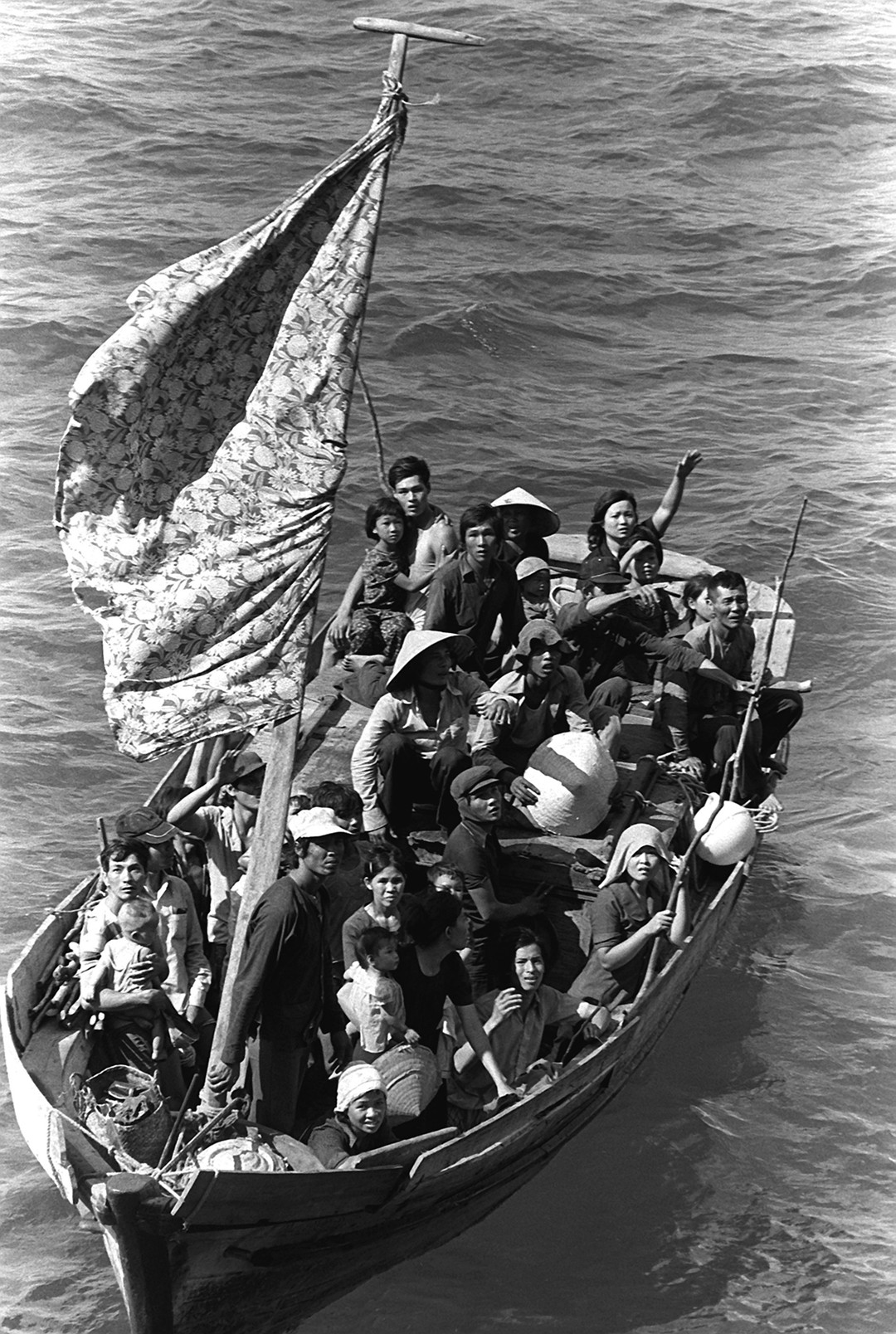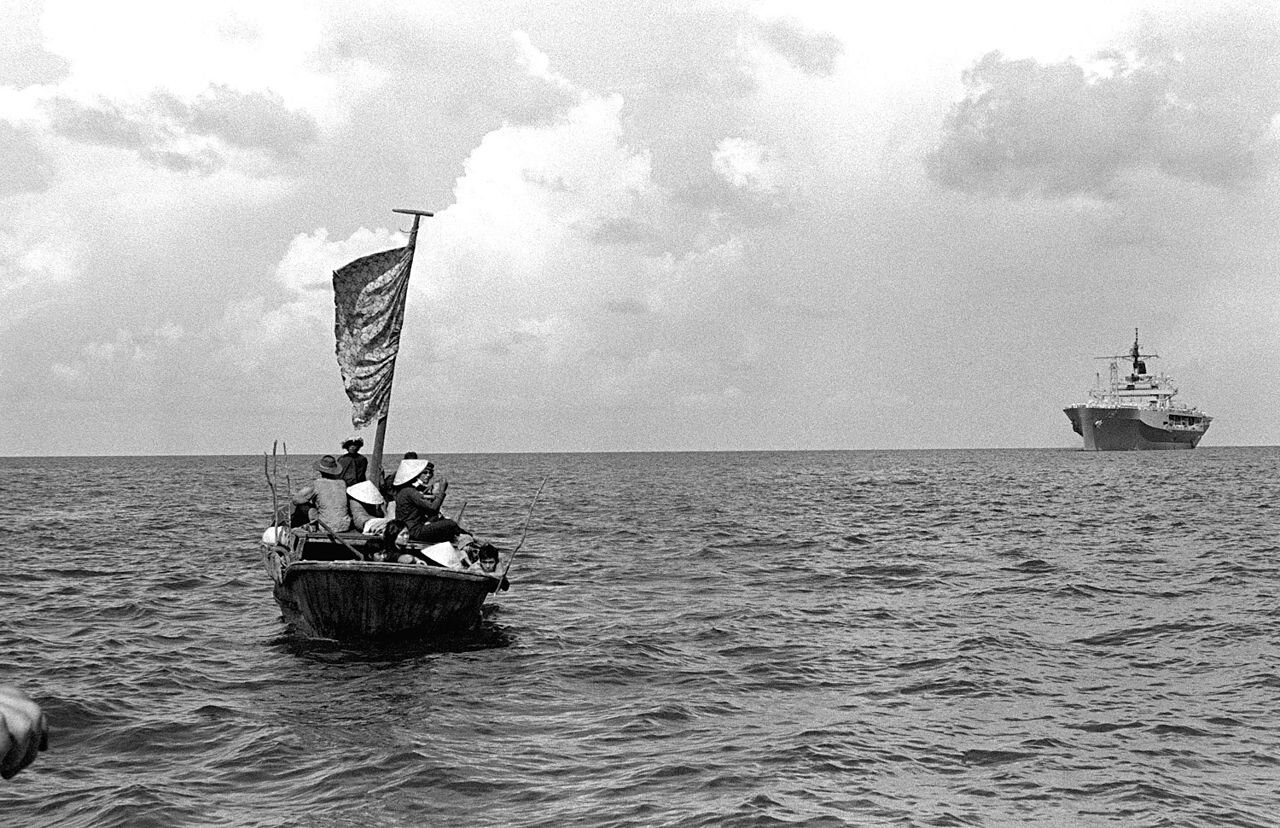分类: 越南华人
-

Vietnamese Boat People
Unknown 1984
More than two million “Vietnamese Boat People” fled their homeland between 1975 and 1995, seeking asylum in neighboring countries and leading to a humanitarian crisis that ended with more than half of the refugees being resettled in the United States. This photograph shows thirty-five refugees awaiting rescue by the USS Blue Ridge. After spending eight days at sea, the thirty-five foot fishing boat was spotted three hundred fifty miles northeast of Cam Ranh Bay, Vietnam
